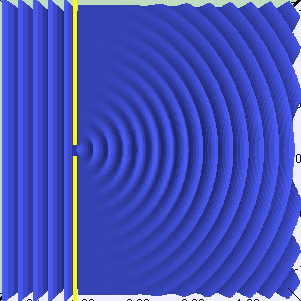

The color of a light source is determined by the distribution of amplitudes of Visible light comprises a superposition of these waves, with wavelengths ranging from 0.5 microns (ultraviolet) to 1 micron (infrared). The wavelength characterizes the oscillating pattern, while the amplitude determines The simple, one-dimensional wave in Figure 8-1 is completely described by its wavelength and amplitude A. This is not surprising,īecause Nature abounds with repeating patterns, both in space and in time. Waves appear in many physical theories of natural phenomena. In fact, the ray theory of light used in computer graphics is an approximation of this wave theory. 8.1.1 The Wave Theory of LightĪt a fundamental level, light behaves as a wave. Our shader is a simplified version of the more general model described in our SIGGRAPH 1999 paper (Stam 1999). Our shader using the Cg programming language. In particular, we provide a complete implementation of This is possible thanks to the programmable hardware available on current graphics cards.

#Wave diffraction how to
In this chapter we show how to model diffraction effects on arbitrary surfaces in real time. Other surfaces that exhibit diffraction are now common and are mass-produced toĬreate funky wrapping paper, colorful toys, and fancy watermarks, for example. This phenomenon is known as diffraction.ĭiffraction causes the reflected light from these surfaces to exhibit many colorful patterns, as you can see in the subtle reflections from a compact disc. The small-scale surface detail causes the reflected waves to interfere with one another. Such as a compact disc, however, wave effects cannot be neglected. This is fine whenever the surface detail is much larger than the wavelength of light (roughly a micron). Most surface reflection models in computer graphics ignore the wavelike effects of natural light.


 0 kommentar(er)
0 kommentar(er)
